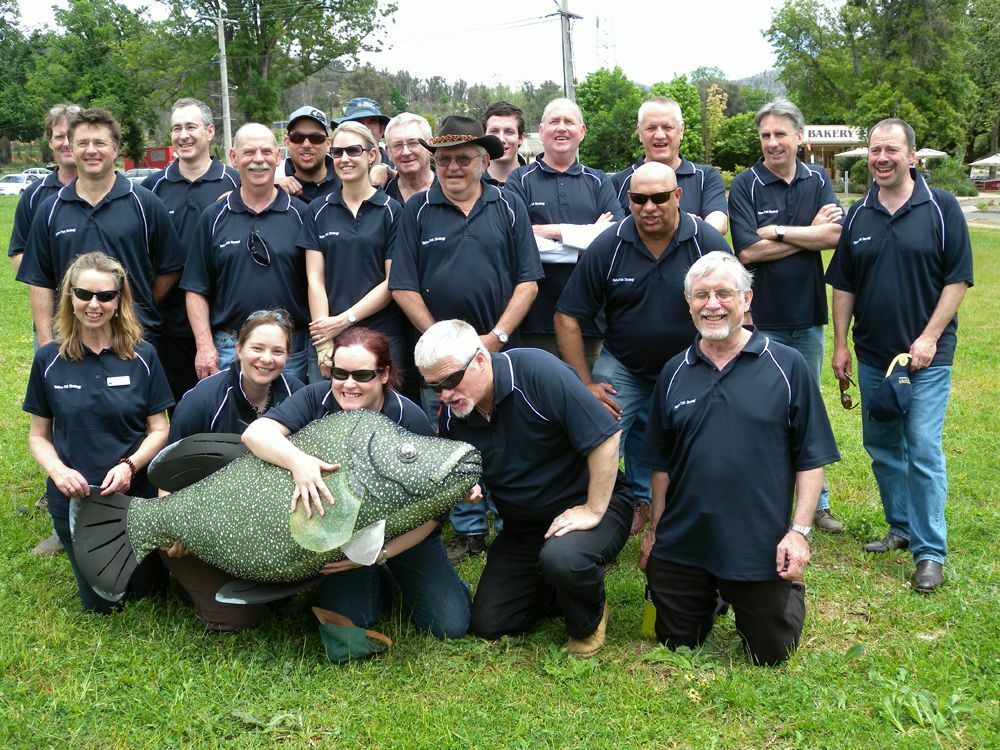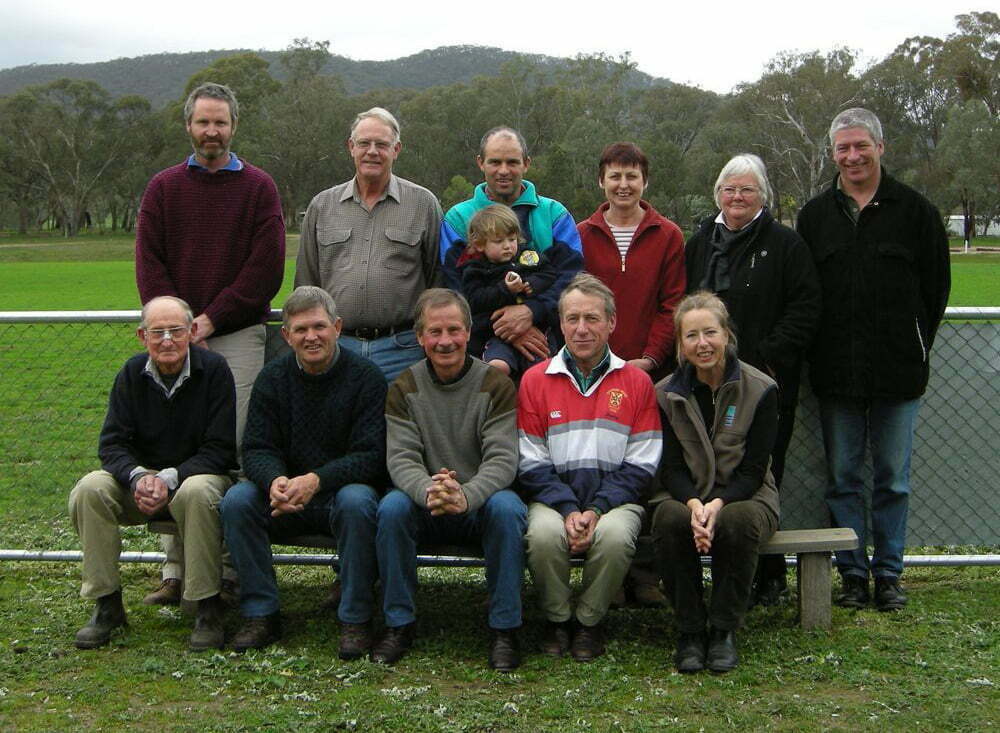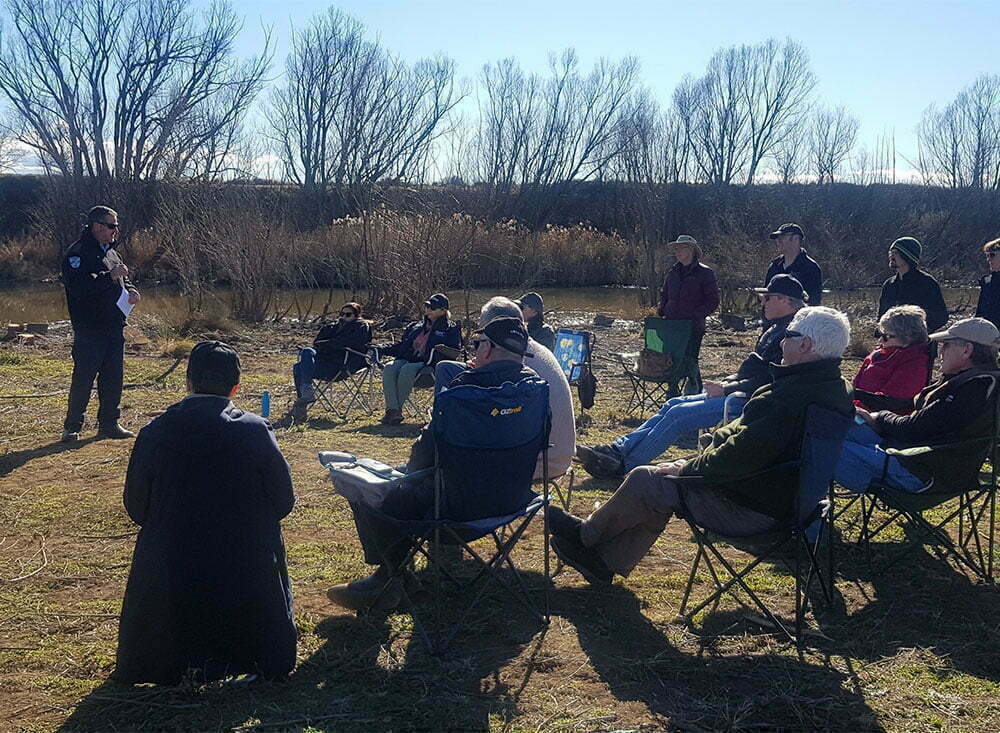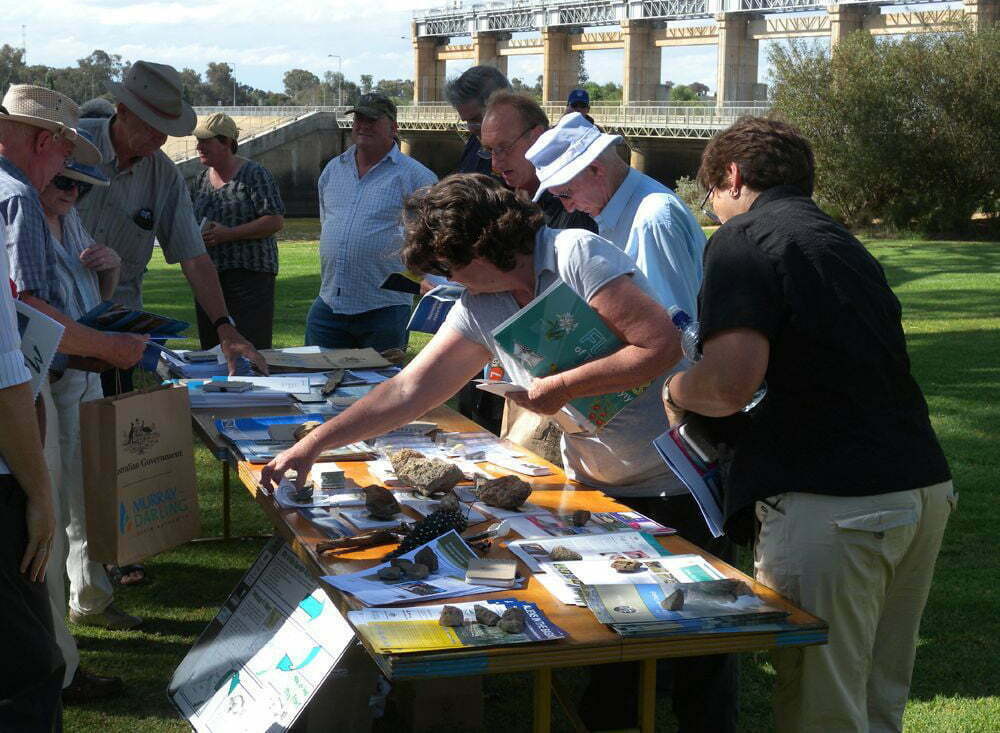Genuine, direct and sustained community involvement is fundamental to the demonstration reach concept. When thinking about where to have a demonstration reach, it is recommended that they are established near large towns which are easily accessible and visible to the public. Without positive community interest in the natural values of a site, it will be harder for a demonstration reach to develop and retain strong and ongoing community support.
The community, particularly key stakeholders like landholders, community groups, recreational fishers, Indigenous members and agencies, need to be involved in all steps of developing and maintaining a demonstration reach – from initial site selection, planning and decision making, participating in management actions and monitoring programs, and celebrating achievements. This strong involvement, supported by an emphasis on two-way communication, builds ownership and long-term support for the reach.
This pillar of the demonstration reach guide outlines approaches that will help identify target audiences, establish infrastructure, organise governance arrangements, clarify key objectives and messages, and develop engagement tools and actions.
Key points to keep in mind
Years of experience in establishing demonstration reaches across the MDB has provided valuable insights into what is needed for successful engagement, including the challenges that may be faced and useful approaches to address these. Key lessons learnt about involving the community are to:
- Use existing community-based networks at the start of the project to identify relevant individuals and organisations with a potential interest in the demonstration reach. Focus on connecting with the community by using local champions and long term residents to raise awareness about the demonstration reach.
- Consider the lessons learnt in identifying and engaging with target audiences which are outlined in the target stakeholders component of this pillar. These relate to expectations and perceptions, effort and time, adaptability and flexibility, diversity and complexity, and understanding and awareness.
- Establish a project infrastructure and governance arrangements that will enable the long term success of the demonstration reach.
- Appoint a dedicated project manager with strong communication skills, as this person is vital in keeping the project and participants together.
- Facilitate the sharing of knowledge about the demonstration each between all participants and groups to ensure all elements of the program link closely (i.e. planning, engagement, onground works and monitoring).
- Ensure that the objectives and key messages of the demonstration reach are guided by the community and encompass, environmental, social and recreational objectives which are understood, agreed upon and supported by all involved.
- Use a diverse range of engagement tools and actions to engage with interested stakeholders (i.e. inform, consult, involve, collaborate and empower). These should be appropriate to the target audience, with the approach prioritised and feasible within the available budget and time frame.
- Link with existing complementary programs and organisations to achieve multiple benefits, including efficient use of resources and cost savings, and developing and building relationships.
Click on each component photo below to explore the guide further.
References
ACT Government (2010) Upper Murrumbidgee Demonstration Reach Implementation Plan . Department of Territory and Municipal Services, Canberra.
Lintermans, M. (2007) Fishes of the Murray-Darling Basin: An Introductory Guide. Murray-Darling Basin Commission Publication No. 10/07, Canberra, Australia.
Examples:
2a – Terms of Reference for the Scientific Advisory Group and Community Reference Group for the Upper Murrumbidgee demonstration reach.
The role of the Upper Murrumbidgee demonstration reach ‘Scientific Advisory Group was to provide expert scientific advice to guide development and review of monitoring and evaluation of the UMDR project.
The group will:
- Identify and agree on appropriate monitoring and evaluation targets to measure the progress of the UMDR project in accordance with NFS guidelines.
- Provide advice during the development of methodology for a comprehensive monitoring and evaluation plan for the UMDR project, including data capture and analysis of techniques in-line with NFS guidelines.
- Review the progress of monitoring and evaluation activities and make relevant recommendations for improving any aspect/s of the monitoring and evaluation activities at nominated stages.
- Identify linkages between the on-ground NRM related rehabilitation activities and the results of monitoring and evaluation studies and provide recommendations towards future work associated with the overall UMDR project
- Review and provide comment on any output/s and presentation of outcomes of monitoring and evaluation activities.
The roles of the Upper Murrumbidgee demonstration reach Community Reference Group were to:
- Facilitate the exchange of knowledge and information between community based individuals, groups and organisations, with the UMDR project manager (and appropriate agency representatives as seen appropriate by the group)
- Inform representatives of the community reference group of existing and potential future actions being undertaken toward UMDR targets.
- Identify on-ground issues within the UMDR and continually review potential opportunities to source funding to remedy the issues.
- Identify and continually review opportunities for community engagement opportunities, including sources of funding to assist with engagement activities, within the UMDR.
- Provide an open forum for raising ideas for ways in which community members can play an active role in ‘championing’ the UMDR or parts thereof, within the bounds of the UMDR plans of action (Implementation, CEPA, Carp Reduction and Monitoring and Evaluation).
2b – Examples of Community Objectives
The Upper Murrumbidgee demonstration reach objectives included:
- increase awareness of activities – what is happening and what is planned in the project
- improve community capacity to assist with management of the Reach
- demonstrate, through education, best practice techniques for environmental rehabilitation and water use
- improve the understanding of river ecology and fish management through communication with the community
- develop a better understanding of the links between traditional culture and the ecology of the river and its floodplain and
- use the site as a demonstration of river rehabilitation to the broad community so that they can learn from it in undertaking their own initiatives.
The Bourke to Brewarrina demonstration reach objectives included:
- raise community awareness about the pressures that affect native fish species and the types of on-ground works required to alleviate these pressures
- demonstrate the cumulative benefits of on-ground aquatic habitat rehabilitation for aquatic species and overall ecosystem health
- rehabilitate native fish habitat in a degraded section of the Barwon-Darling River, to show a positive impact on fish populations
- enable the community to continue improving the river environment after the project ends and
- contribute to the Native Fish Strategy goal of rehabilitating native fish communities to 60 % of pre-European settlement levels within the next 50 years.
2c – Examples of messages
The NSW demonstration reaches (Bourke to Brewarrina and Namoi) included a variety of clear messages to appeal to a variety of audiences. These are summarised below:
- Native fish communities of the Murray-Darling Basin (Bourke to Brewarrina/Namoi) are at risk, but there are things we can do to help bring them back.
- Carrying out a range of activities simultaneously increases the benefit to fish, aquatic habitat, and river health.
- We can improve fish habitats, leading to healthier fish populations.
- If we know what the problems are, we can plan how to fix them.
- Restoring fish communities won’t happen overnight: it’s a long-term commitment.
- Native fish need the help of everyone, especially local communities that live and work around our waterways. It doesn’t matter how small you think your contribution is.
- Projects will also benefit landholders through improved on-farm management, leading to increased primary production and land value.
The Hollands Creek demonstration reach included the following key messages:
- Native fish in the Murray Darling Basin have suffered serious declines in both distribution and abundance. Management interventions can slow and reverse those declines.
- Hollands Creek has been identified as a suitable demonstration reach site, as it has several key values and should respond well to a range of river rehabilitation actions.
- Hollands Creek is home to an important population of Macquarie perch
- Arthur Rylah Institute (DSE Victoria) and the Goulburn Broken Catchment Management Authority (GBCMA) are committed to working with the community to ensure that the demonstration reach is developed as a partnership and involves the most appropriate works.
- Community input will play an important role in the rehabilitation of the site.
- The Hollands Creek demonstration reach project is designed to improve native fish populations and river health, and will not reduce visitor access.




